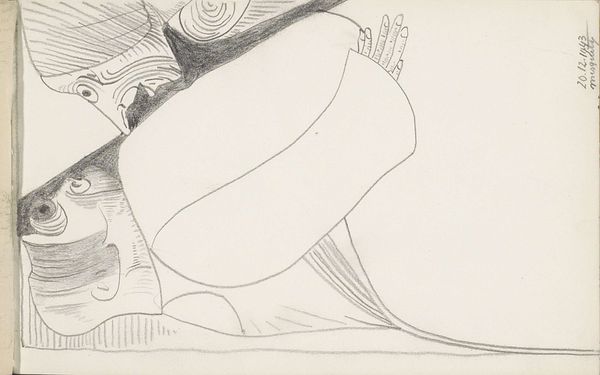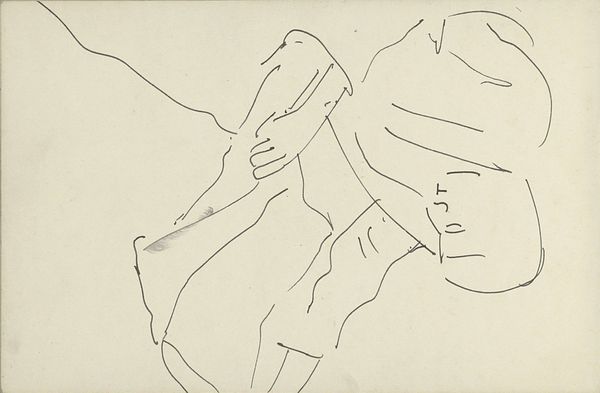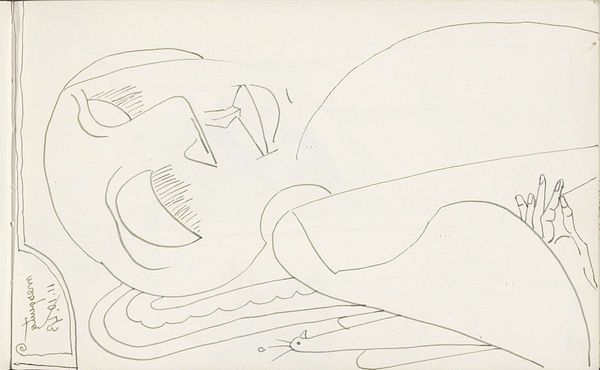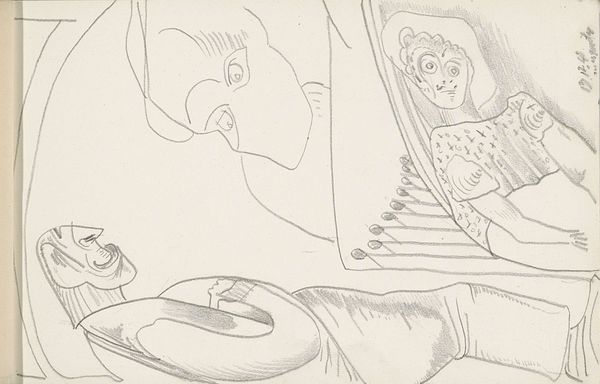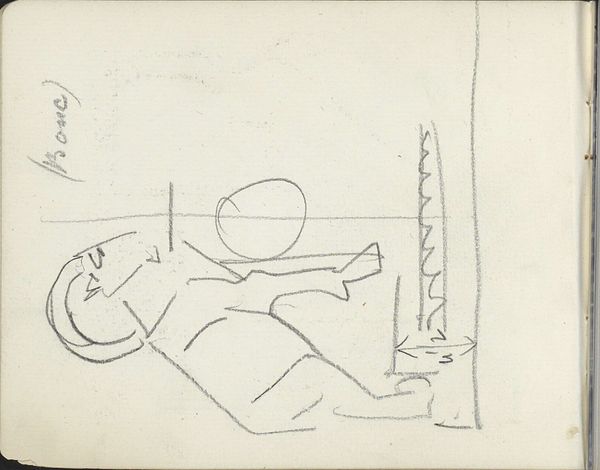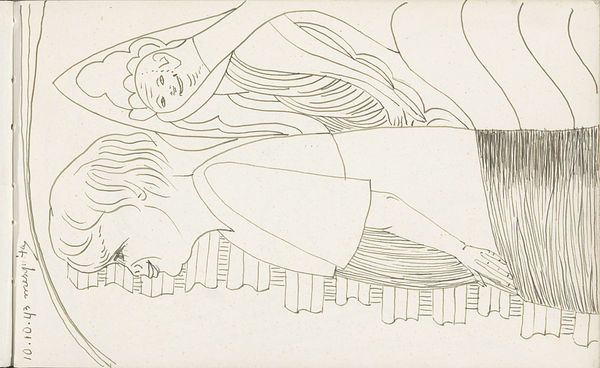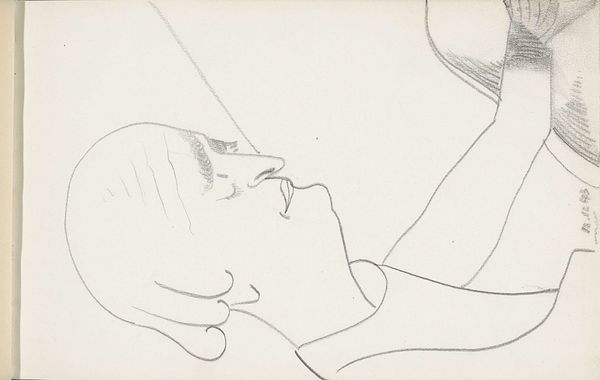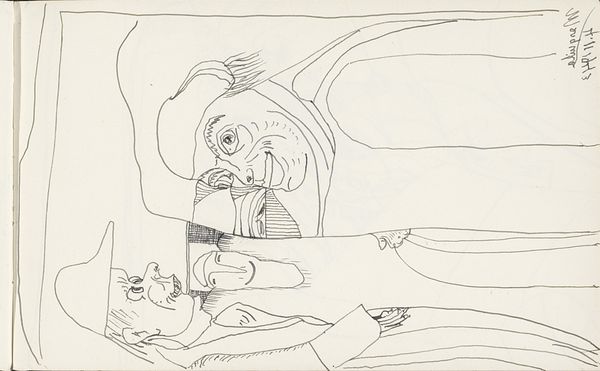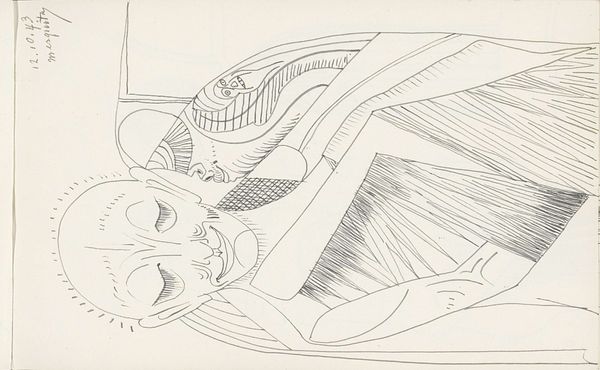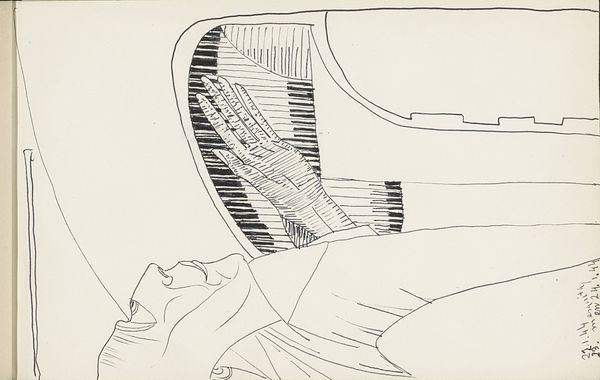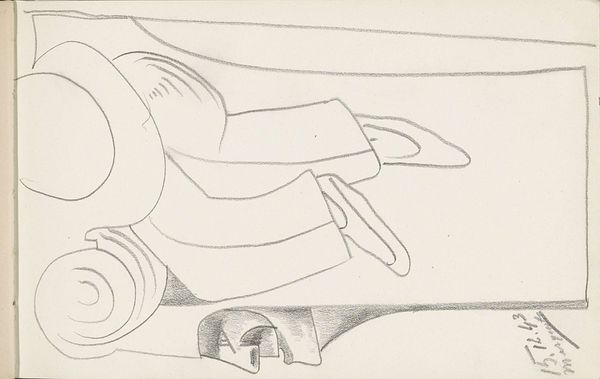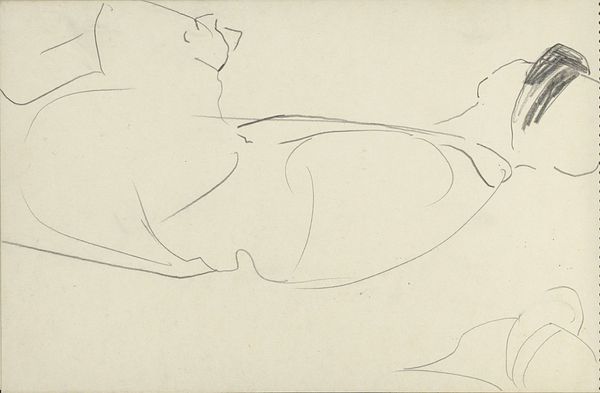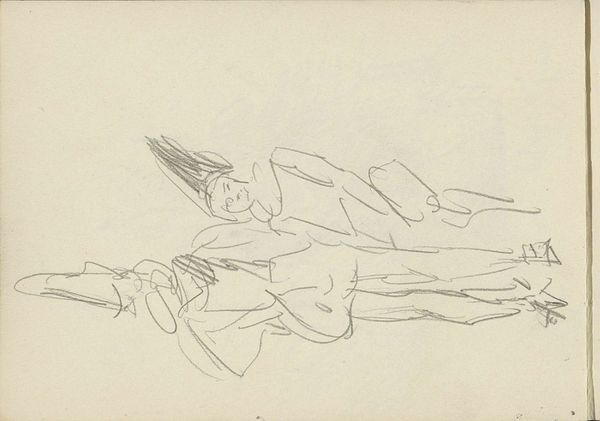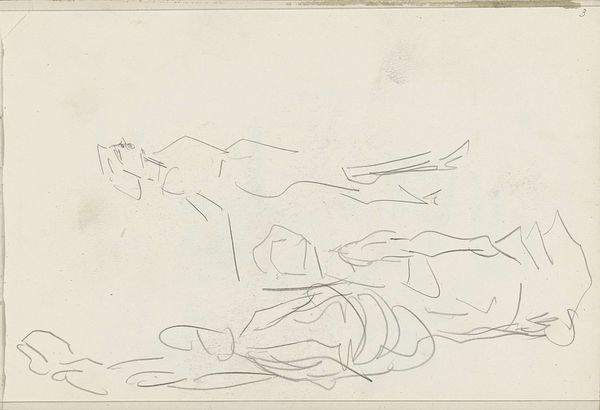
Figuur in profiel naar rechts tegenover een fantasiekerkgebouw met een gargouille Possibly 1943
0:00
0:00
drawing, paper, ink
#
portrait
#
drawing
#
comic strip sketch
#
pen sketch
#
fantasy-art
#
figuration
#
paper
#
personal sketchbook
#
linework heavy
#
ink
#
idea generation sketch
#
sketchwork
#
ink drawing experimentation
#
pen-ink sketch
#
line
#
sketchbook drawing
#
modernism
#
initial sketch
Copyright: Rijks Museum: Open Domain
Editor: This ink drawing on paper, “Figuur in profiel naar rechts tegenover een fantasiekerkgebouw met een gargouille,” possibly from 1943, is by Samuel Jessurun de Mesquita. The stark lines give it a very surreal quality; it feels like a dreamscape. How do you interpret this work? Curator: This drawing speaks volumes when considered within its historical context. De Mesquita was murdered at Auschwitz in 1944. Knowing this, does the initially surreal atmosphere now feel more like a premonition or a grappling with mortality? The architectural elements and gargoyle become particularly potent symbols. Editor: Absolutely, the knowledge of his fate adds a layer of tragedy. The gargoyle, traditionally a ward against evil, feels powerless here. Curator: Precisely. And the profile, seemingly in distress beneath this oppressive structure. What narratives do you think the artist is engaging with, given his Jewish identity during the Holocaust? Is he perhaps reflecting on the crumbling facade of societal protection? Editor: That makes sense. The architectural details look both fantastical and constricting, symbolizing the era's political climate, creating an inescapable feeling. It's less about personal fear and more a commentary on collective vulnerability. Curator: Indeed. It challenges us to view the personal through the lens of broader systemic oppressions. Does that reframing shift how you connect with the drawing? Editor: Definitely. What I initially perceived as just surrealism now feels like urgent historical testimony. It’s both powerful and deeply unsettling. Curator: Seeing art as activism is about unveiling these layers, recognizing how artists use their voice, even when working with simple ink and paper, to confront difficult realities and challenge us to think critically. Editor: Thank you; this has given me a much richer understanding.
Comments
No comments
Be the first to comment and join the conversation on the ultimate creative platform.
